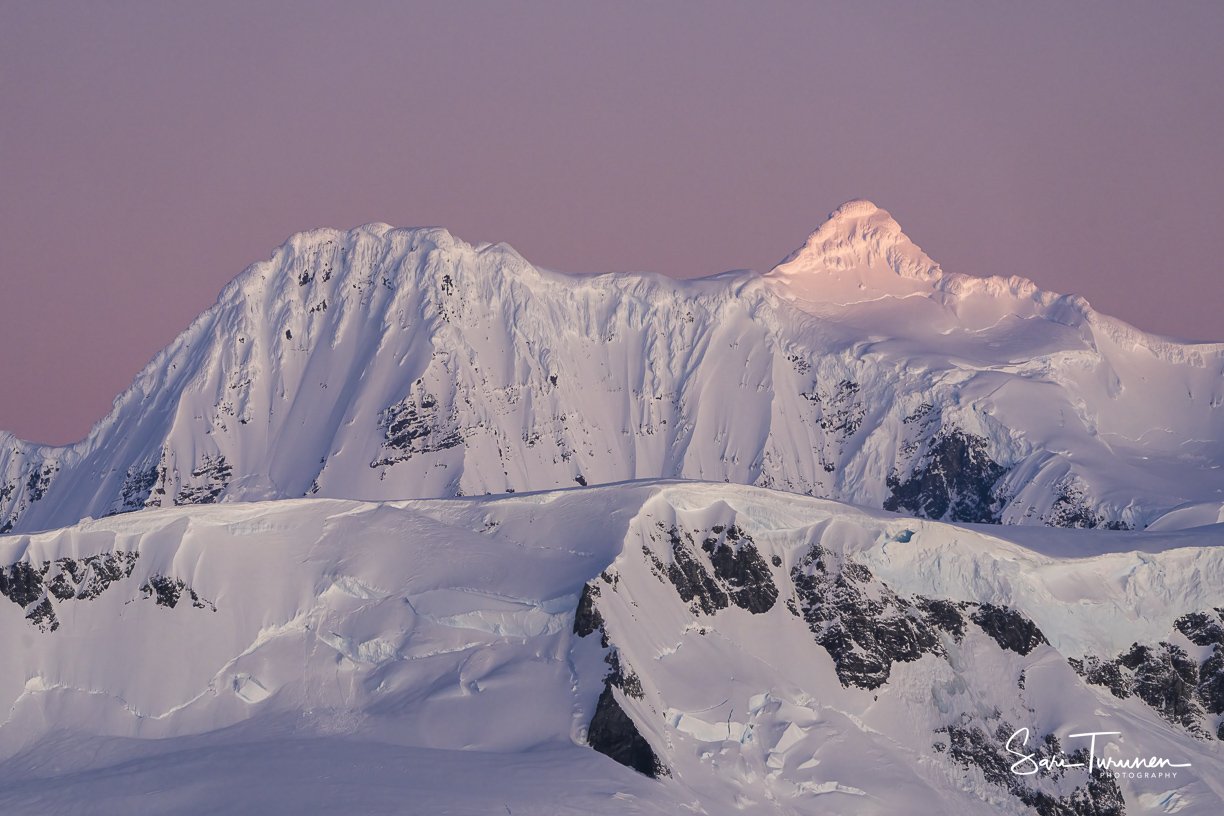Autumn in Antarctica
The expedition in Antarctica in the end of March had everything one can dream of: beautiful autumn light, fresh snow, amazing landscapes, lots of whales and seals, and of course penguins. We even had a good Drake shake on the way South with hurricane level winds, Beaufort level 12! Fortunately the waves were only up to seven meters and less.
Drake shake
The first landing site was Curveville Island where I was in the spring 2017. At that time we were not able to cross the Lemaire Channel due to ice, thus Cuverville island was the most Southern landing we did. This time we basically started the expedition from there.
Our aim was to go south which we did very successfully. The most Southern point we landed was Red Rock Ridge (68°17.517’ South, 67° 11.209’ West), well below the Antarctic Circle. We spent several days in the astounding Marguerite Bay which was brimming with wildlife.
Elephant seals in Jenny Island
It was Jenny Island that blew my mind. It’s a tiny mountainous island; it didn’t look anything special from distance. But once you get a better look with the binoculars you could see that the shores were filled with Antarctic fur seals and elephant seals. Normally it’s quite difficult to find elephant seals in the islands of the Antarctic Peninsula. In addition to the rich seal populations there were orcas and humpback whales around Jenny Island.
The young elephant seals and Antarctic fur seals were very active; challenging others to practise fighting. This will be a crucial skill if they ever want to be the beach master. Some of the fur seals tried to challenge penguins and people as well. No success this time.
Young gentoo penguin
There is one magnificent animal I have wished to see since forever: the leopard seal. In 2017 I saw one leopard seal for two seconds then it dived under an iceberg and never came back. This time I saw one swimming for a couple of minutes. Next time?
Gentoo penguins were by far the most numerous penguin. There was a good amount of adelie penguins as well, but just one chinstrap penguin in Port Charcot. Poor fellow had lost all friends somewhere.
We passed through the narrow Gunnel channel. We might have been the first passenger vessels to do so. With a calm weather this channel turned out to be one of the most beautiful passages with mountains and glaciers on both sides and icebergs all the way through.
Gunnel Channel in the evening light
The young penguin chicks loose their baby feathers during this time of the year. They look pretty funky as the feathers are not going out evenly. Even the penguins were more active than I had expected. Some of the chicks are still running after the parents and begging for a tasty meal, others going and coming back from the sea.
There were several mornings and evenings with beautiful light. Icebergs and glaciers change colours depending on the light: from white to blue to orange to pink to white again. Antarctica is a white continent, but with many colours.
Antarctic fur seals in Pourquoi Pas Island
On the way back North we stopped in the Deception Island. This time we went inside the crater. Deception Island is the only active volcano where you can go with a ship. The landing site was the Stancomb Cove in the end of the crater. With the first snow the landscape was like a black and white film apart from the green water. Totally unreal views.
There are so many, too many, photographic opportunities: landscapes, wildlife, birds, details, abstracts,… sometimes it’s just better to take a deep breath and enjoy what Antarctica has to offer.
Is it so beautiful when no one is watching?
Stancomb Cove in Deception Island







